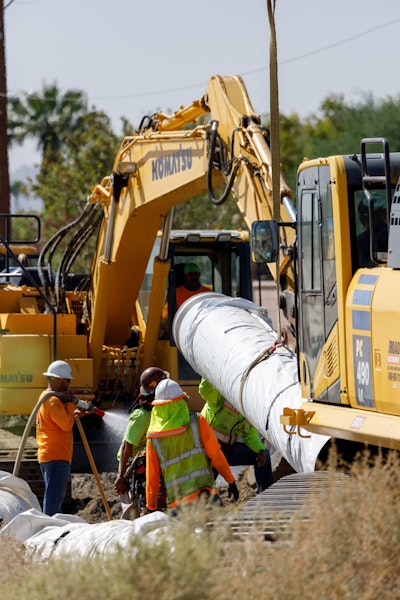
Crew Chief Joseph Bloch (left) and Senior Engineer Mario Zamora monitor their Coachella Valley Water District crew as they tie in the newly built Verano Reservoir to their water system.
Photography by Matt Dayka
By implementing sustainable water strategies decades ago, including the use of recycled water for irrigation purposes and an aggressive groundwater replenishment program, the Coachella Valley Water District in Southern California has been able to carefully marshal its most valuable...










